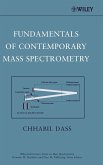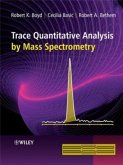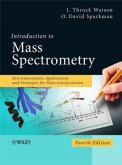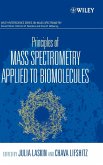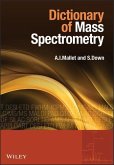This text presents the information needed to design a successful quantitative analysis using mass spectrometric techniques currently available and widely employed. It is devoted to the researchers of different areas, who use mass spectrometry as a detector suitable for the measurements of their interest.
What is usually required of an analytical technique? Specificity, selectivity and sensitivity -or, more precisely, a detection limit as low as possible. These criteria are fulfilled by mass spectrometry is an essential tool for qualitative and quantitative investigations in many applications, in particular in environmental science and biomedicine,with positive benefits to mankind.
The problem that has arisen from this large expansion is that mass spectrometry is mainly considered as a "magic box" technique, in which on one side a sample is introduced and on the other side the analytical data comes out. Thus, the basic aspects of the technique are often not well known. To overcome this, the authors present within this text some basic information for scientists and technicians working in the field of quantitative organic mass spectrometry, in particular for those who, for the first time, face all the problems arising from the development and use of a quantitative procedure.
This informative text presents basic information on:
_ What instrumental approaches are available
_ How to design a quantitative analysis
_ How to improve specificity
_ Some thoughts on calibration and data analysis
This book is mainly aimed at analytical chemists working in academic, environmental, pharmaceutical, biochemical, forensic, clinical and industrial laboratories, but is also appropriate for researchers new to the technique, e.g. biochemists, biologist, physicians and workers in pharmaceutical, food and the health sciences.
What is usually required of an analytical technique? Specificity, selectivity and sensitivity -or, more precisely, a detection limit as low as possible. These criteria are fulfilled by mass spectrometry is an essential tool for qualitative and quantitative investigations in many applications, in particular in environmental science and biomedicine,with positive benefits to mankind.
The problem that has arisen from this large expansion is that mass spectrometry is mainly considered as a "magic box" technique, in which on one side a sample is introduced and on the other side the analytical data comes out. Thus, the basic aspects of the technique are often not well known. To overcome this, the authors present within this text some basic information for scientists and technicians working in the field of quantitative organic mass spectrometry, in particular for those who, for the first time, face all the problems arising from the development and use of a quantitative procedure.
This informative text presents basic information on:
_ What instrumental approaches are available
_ How to design a quantitative analysis
_ How to improve specificity
_ Some thoughts on calibration and data analysis
This book is mainly aimed at analytical chemists working in academic, environmental, pharmaceutical, biochemical, forensic, clinical and industrial laboratories, but is also appropriate for researchers new to the technique, e.g. biochemists, biologist, physicians and workers in pharmaceutical, food and the health sciences.


